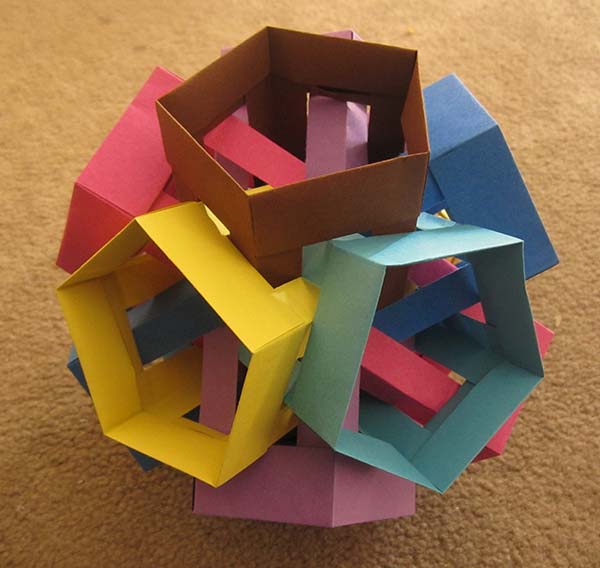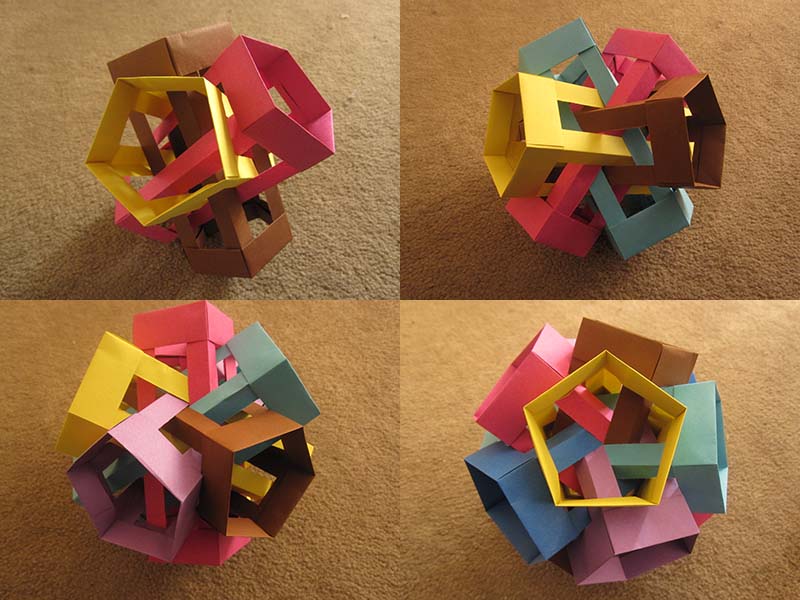
Six intersecting pentagonal prisms, designed by me.
I might be less active this month, so I thought I’d make up for it with an origami model you can dig into. This model is called “Six Intersecting Pentagonal Prisms” because it’s literally made from six pentagonal prisms. I’ve got some photos below the fold showing the step by step addition of each pentagonal prism.

The idea of weaving six pentagonal prisms together isn’t totally novel. There’s an older model by Daniel Kwan (diagrams, video) which is mathematically equivalent, but with a few cosmetic differences. There are also two more distinct ways to weave six pentagonal prisms (here and here).
Why six pentagonal prisms? Why not five or seven? Or why not six triangular prisms or hexagonal prisms?
I won’t answer that question in full detail, but it has to do with symmetry. If we want to create a model with a high degree of symmetry, the primary options are the five platonic solids: tetrahedron, cube, octahedron, dodecahedron, and icosahedron. This model is based on the dodecahedron. Each pentagonal prism has two pentagonal faces, which appear on opposite sides of the model. So 6 pentagonal prisms leads to 12 pentagonal faces, like a dodecahedron.
We could apply the same logic to the other platonic solids (except for the tetrahedron, since the triangular faces aren’t opposite to each other). A cube has 6 square faces, so there’s a model with 3 intersecting square prisms. An octahedron has 8 triangular faces, so there’s a model with 4 intersecting triangular prisms. An icosahedron has 20 triangular faces, so there’s a model with 10 triangular prisms. Feel free to look each of these up, I guarantee that someone has made them.
This method won’t produce an exhaustive list of the possibilities, though. For a more exhaustive list, I’d refer to Robert Lang’s list of polypolyhedra.
One thing I like about this model is that it’s basically a realization of a hemi-dodecahedron. A hemi-dodecahedron is one of those exotic mathematical concepts you read about on Wikipedia, which must surely have no useful application. It’s an “abstract polyhedron”, which is a generalization of polyedra unconstrained by such things as “euclidean geometry”. The hemi-dodecahedron consists of six pentagonal faces (each of which can be identified with a hexagonal prism), and all the faces are adjacent to each other. It’s just like how each of the hexagonal prisms is adjacent to the other five.

Leave a Reply